An Animated Future
The following article was inspired by a forum discussion about the future direction of animation. These types of discussions can become very emotional probably because some people feel that 3D CGI is threatening to replace traditional 2D drawn animation. I will only try to add some perspective here and save the strong opinions for others.
Animated content has for the most part divided into segments much as it did in the 1950's. At that time the division was between "full" animation and "limited" animation. It was primarily economically motivated. TV was an emerging market and there was a major shift toward "limited" animation. "Full" animation was abandoned except for theatrical features and high end TV commercials.
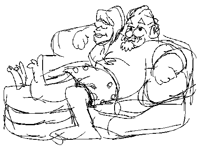
Today the split is between 3D CGI animation and 2D animation. 3D CGI is primarily for theatrical features and high end TV commercials. 2D, mostly "limited" animation is dominant on TV and other media.
There are new factors involved in this latest split. The biggest of which is the technological explosion that has brought animation production to millions who previously could not participate. 3D CGI is a costly, people intensive production environment. 2D is now readily available to the individual creator. For the feature film world, 3D CGI is now dominant partly because it is relatively new and therefore has a “fresh” appeal and partly because it is more difficult to produce and provides some barriers to smaller studios and thus affords a unique strategic advantage for the larger studios. After all, media production is highly competitive. Both areas will continue to exist, evolve and thrive. The driving force will be the unquenchable thirst of the world for more and more content delivered through more and more media channels.
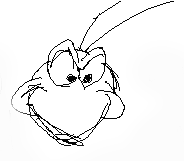
For many creators it will be a choice of one or the other based on their personal taste and situation. 2D will certainly be the choice of most independent small creators and they will never have to worry about a lack of interest in their creations because there will never be enough content to suit all the different emerging avenues of demand. The future of animation is today brighter than ever and the need for entertaining content is and will continue to be the driving force. Part of the entertainment equation is diversification and therefore styles will expand not contract. Creators only need to focus on being entertaining.
There is now and will be for a long time into the future a huge worldwide demand for content of all kinds. There are new and emerging media channels that all require content to flourish. Who will make that content? I don't know, but someone will. There is plenty of opportunity to go around for those who choose to participate.
Many people complain that mass access to animation production has eroded quality. What is acceptable quality? If it is entertaining to someone, they will watch it. Will the same thing be entertaining to everyone? No, it never has been and never will be.
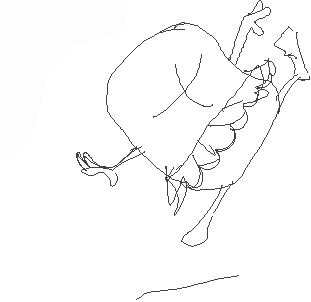
There are different aspects to creating content. By the way all animated works fall under my definition of content. So there is no implication of quality in the term content. All animated works can be and are viewed as content and their quality is totally a matter of how they are perceived and received by their viewers.
Content can be produced as work for hire or it can be produced independently. In the case of work for hire the content and its production is subject to the requirements and standards of the entity that pays for the work, the buyer. If a creator chooses to participate then they must adapt to these conditions. You can present your views and opinions but in the end the buyer of the production services makes the rules. The customer / client may not always be right but they will always be the customer / client. There is no sale without them.
If a creator chooses to produce independent work then the viewer becomes the customer. If they find the content entertaining then they will want to continue as your customer and if not then they won't. If you self publish and self distribute there is no "middle man". But in most cases there is a content provider in the middle and they are driven by viewer’s opinions. The bigger the audience a work receives the better.
The sad facts of life for any content creator revolve around their creation being accepted by others. Beyond that there is the personal joy of creation. But much like gravity there are some things that exist and must be accepted.
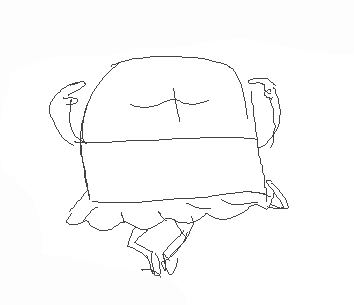
Please don’t confuse quality of animation with your aesthetics of art. One man's aesthetic view may differ from another man's view but that doesn't mean that what you find aesthetically pleasing is of a greater quality. If you notice when you read what I write I stay away from discussing quality because it is such a difficult term to define. I always try to talk in terms of content being entertaining.
To be entertaining is a much broader term than just to be aesthetically pleasing. A picture may be pleasing to look at and still not capable of entertaining or engaging a viewer. And content may not be aesthetically all that outstanding and yet it can be very entertaining. To entertain is to communicate experiences, to make a connection, to generate a response. You can create a totally realistic animation of a man walking down a road and it can be of the highest aesthetic quality totally life like as if it were photo-real. And it can also be a complete bore to 99.9% of all viewers. Or you can create a totally silly, jerky unrealistic cartoon that connects with your audience and produces a response and therefore entertains and engages them.
The point is that unless your total goal is just to entertain yourself, as a creator you must focus on connecting with your audience. If you can do that with scribbles and squiggles then you are just as successful as if you did it with fine art. The goal is to entertain. The style is not relevant unless it is relevant to your client. And never should you confuse effort with results. If it took you an hour or a year that is not important to the viewer they only care if it is entertaining to them. If you entertain them they will enjoy and appreciate your work and if not they will look elsewhere.
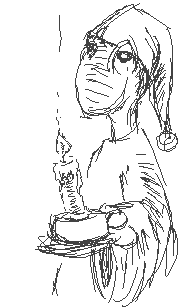
A statement which is often used in discussions of creating content is one where successful creators have said "we just did what entertained us or made us laugh". Chuck Jones is often quoted as having made such a statement and others have repeated it in their own words as well. Unfortunately I think that this statement is all too often repeated and misunderstood. It is taken to mean that as a content creator you should create to satisfy yourself and not worry about what others think.
It really doesn't mean that at all. It means, in my opinion, that a creator must have a strong sense of what is entertaining and be true to that sense. But to have a strong sense of what entertains people means to understand how to engage and connect with your audience. It is another way of saying that a creator must understand showmanship.
Steven Spielberg is often credited with understanding his audience better than it understands itself. He has a strong sense of entertainment. Any successful creator must develop and refine this sense and then be true to it. But it isn't an introspective thing or a self gratification thing. It is a statement that a creator needs to have an intuitive feel for the art and craft of entertainment. That's why Disney faltered and now has turned to John Lassiter to lead their animation efforts. They lost that connection to their audience and they needed a visionary showman to apply his intuition and talent for entertaining to show them how to regain their lost connection with audiences. It isn't a 2D or 3D thing, it is a “how to relate and connect” thing.
In truth, audiences are diverse and there are many ways in which to engage and entertain them.
In a simple recap:
(1) There is and will be a significant growing demand for entertaining animation content.
(2) There is and will be a significant growing demand for diversified styles of animation.
(3) A successful creator must develop a strong sense of showmanship and be true to their intuition.
(4) There are significant opportunities for creative collaborations.
Historically creating animated content required significant organizations and were beyond the reach of small independent groups. Today a small group perhaps not more than two or three collaborators can be successful.
Finally, there is room for any style and type of animation content. There is no need to compromise your artistic vision. If the result is entertaining it will be accepted and embraced. If it is dull and boring it will be rejected. Each creator must be willing to take that risk.
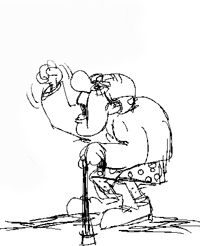
The only pitfall that a "would-be" creator should avoid is having a rigid, narrow minded, arrogant, self indulgent and inflexible view of the world. Because the only thing that limits our own creativity is us.
Animated content has for the most part divided into segments much as it did in the 1950's. At that time the division was between "full" animation and "limited" animation. It was primarily economically motivated. TV was an emerging market and there was a major shift toward "limited" animation. "Full" animation was abandoned except for theatrical features and high end TV commercials.

Today the split is between 3D CGI animation and 2D animation. 3D CGI is primarily for theatrical features and high end TV commercials. 2D, mostly "limited" animation is dominant on TV and other media.
There are new factors involved in this latest split. The biggest of which is the technological explosion that has brought animation production to millions who previously could not participate. 3D CGI is a costly, people intensive production environment. 2D is now readily available to the individual creator. For the feature film world, 3D CGI is now dominant partly because it is relatively new and therefore has a “fresh” appeal and partly because it is more difficult to produce and provides some barriers to smaller studios and thus affords a unique strategic advantage for the larger studios. After all, media production is highly competitive. Both areas will continue to exist, evolve and thrive. The driving force will be the unquenchable thirst of the world for more and more content delivered through more and more media channels.

For many creators it will be a choice of one or the other based on their personal taste and situation. 2D will certainly be the choice of most independent small creators and they will never have to worry about a lack of interest in their creations because there will never be enough content to suit all the different emerging avenues of demand. The future of animation is today brighter than ever and the need for entertaining content is and will continue to be the driving force. Part of the entertainment equation is diversification and therefore styles will expand not contract. Creators only need to focus on being entertaining.
There is now and will be for a long time into the future a huge worldwide demand for content of all kinds. There are new and emerging media channels that all require content to flourish. Who will make that content? I don't know, but someone will. There is plenty of opportunity to go around for those who choose to participate.
Many people complain that mass access to animation production has eroded quality. What is acceptable quality? If it is entertaining to someone, they will watch it. Will the same thing be entertaining to everyone? No, it never has been and never will be.

There are different aspects to creating content. By the way all animated works fall under my definition of content. So there is no implication of quality in the term content. All animated works can be and are viewed as content and their quality is totally a matter of how they are perceived and received by their viewers.
Content can be produced as work for hire or it can be produced independently. In the case of work for hire the content and its production is subject to the requirements and standards of the entity that pays for the work, the buyer. If a creator chooses to participate then they must adapt to these conditions. You can present your views and opinions but in the end the buyer of the production services makes the rules. The customer / client may not always be right but they will always be the customer / client. There is no sale without them.
If a creator chooses to produce independent work then the viewer becomes the customer. If they find the content entertaining then they will want to continue as your customer and if not then they won't. If you self publish and self distribute there is no "middle man". But in most cases there is a content provider in the middle and they are driven by viewer’s opinions. The bigger the audience a work receives the better.
The sad facts of life for any content creator revolve around their creation being accepted by others. Beyond that there is the personal joy of creation. But much like gravity there are some things that exist and must be accepted.

Please don’t confuse quality of animation with your aesthetics of art. One man's aesthetic view may differ from another man's view but that doesn't mean that what you find aesthetically pleasing is of a greater quality. If you notice when you read what I write I stay away from discussing quality because it is such a difficult term to define. I always try to talk in terms of content being entertaining.
To be entertaining is a much broader term than just to be aesthetically pleasing. A picture may be pleasing to look at and still not capable of entertaining or engaging a viewer. And content may not be aesthetically all that outstanding and yet it can be very entertaining. To entertain is to communicate experiences, to make a connection, to generate a response. You can create a totally realistic animation of a man walking down a road and it can be of the highest aesthetic quality totally life like as if it were photo-real. And it can also be a complete bore to 99.9% of all viewers. Or you can create a totally silly, jerky unrealistic cartoon that connects with your audience and produces a response and therefore entertains and engages them.
The point is that unless your total goal is just to entertain yourself, as a creator you must focus on connecting with your audience. If you can do that with scribbles and squiggles then you are just as successful as if you did it with fine art. The goal is to entertain. The style is not relevant unless it is relevant to your client. And never should you confuse effort with results. If it took you an hour or a year that is not important to the viewer they only care if it is entertaining to them. If you entertain them they will enjoy and appreciate your work and if not they will look elsewhere.

A statement which is often used in discussions of creating content is one where successful creators have said "we just did what entertained us or made us laugh". Chuck Jones is often quoted as having made such a statement and others have repeated it in their own words as well. Unfortunately I think that this statement is all too often repeated and misunderstood. It is taken to mean that as a content creator you should create to satisfy yourself and not worry about what others think.
It really doesn't mean that at all. It means, in my opinion, that a creator must have a strong sense of what is entertaining and be true to that sense. But to have a strong sense of what entertains people means to understand how to engage and connect with your audience. It is another way of saying that a creator must understand showmanship.
Steven Spielberg is often credited with understanding his audience better than it understands itself. He has a strong sense of entertainment. Any successful creator must develop and refine this sense and then be true to it. But it isn't an introspective thing or a self gratification thing. It is a statement that a creator needs to have an intuitive feel for the art and craft of entertainment. That's why Disney faltered and now has turned to John Lassiter to lead their animation efforts. They lost that connection to their audience and they needed a visionary showman to apply his intuition and talent for entertaining to show them how to regain their lost connection with audiences. It isn't a 2D or 3D thing, it is a “how to relate and connect” thing.
In truth, audiences are diverse and there are many ways in which to engage and entertain them.
In a simple recap:
(1) There is and will be a significant growing demand for entertaining animation content.
(2) There is and will be a significant growing demand for diversified styles of animation.
(3) A successful creator must develop a strong sense of showmanship and be true to their intuition.
(4) There are significant opportunities for creative collaborations.
Historically creating animated content required significant organizations and were beyond the reach of small independent groups. Today a small group perhaps not more than two or three collaborators can be successful.
Finally, there is room for any style and type of animation content. There is no need to compromise your artistic vision. If the result is entertaining it will be accepted and embraced. If it is dull and boring it will be rejected. Each creator must be willing to take that risk.

The only pitfall that a "would-be" creator should avoid is having a rigid, narrow minded, arrogant, self indulgent and inflexible view of the world. Because the only thing that limits our own creativity is us.

0 Comments:
Post a Comment
<< Home